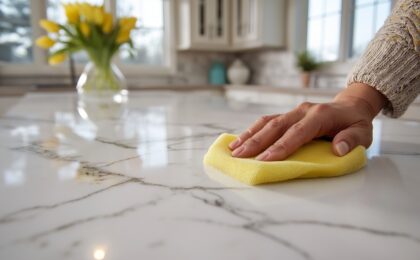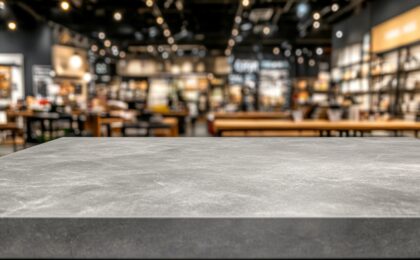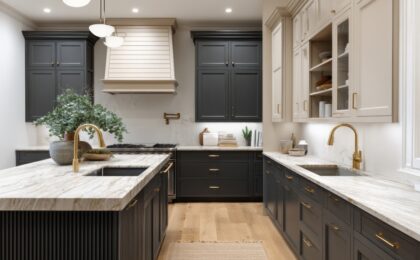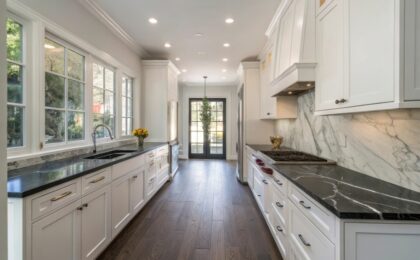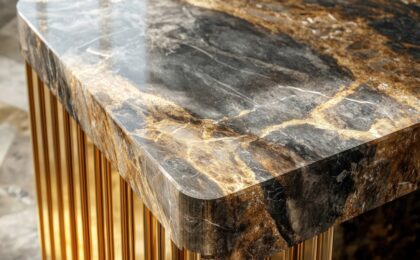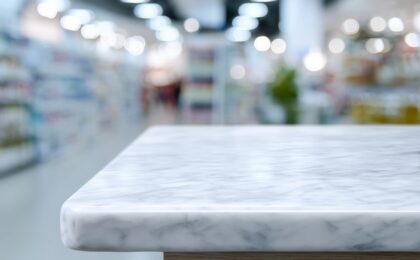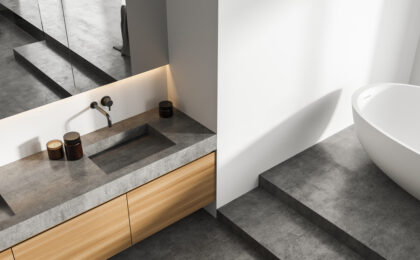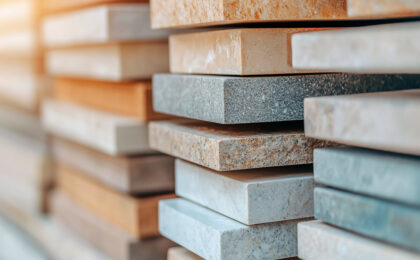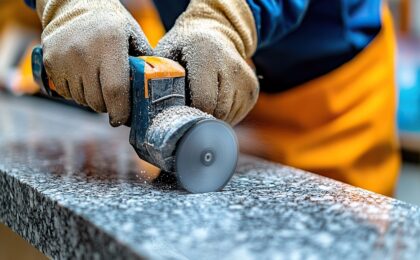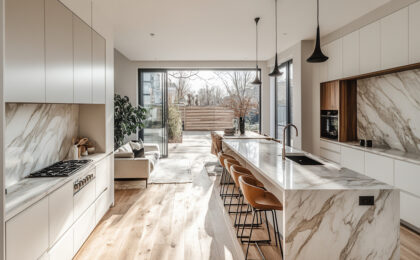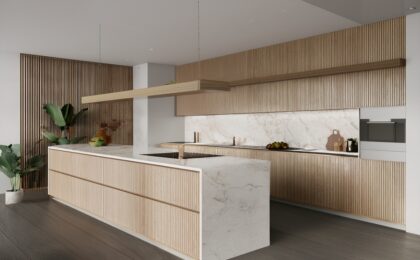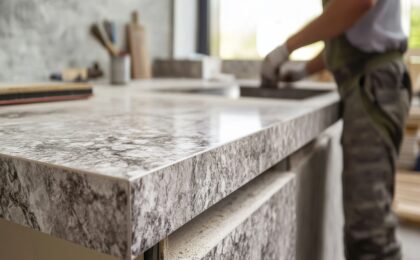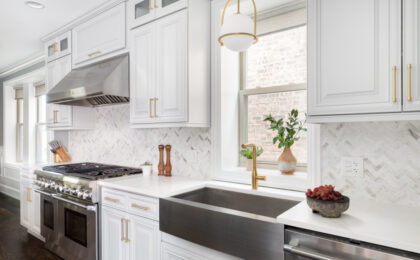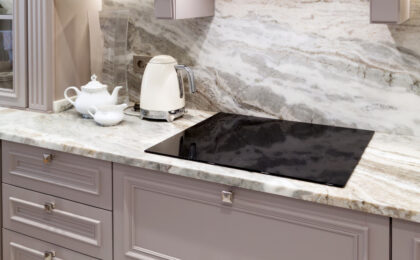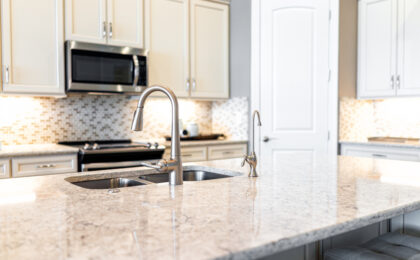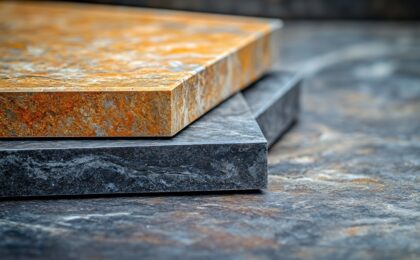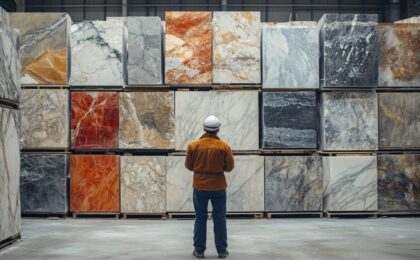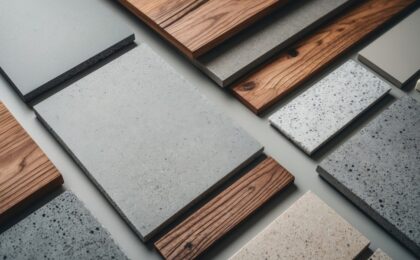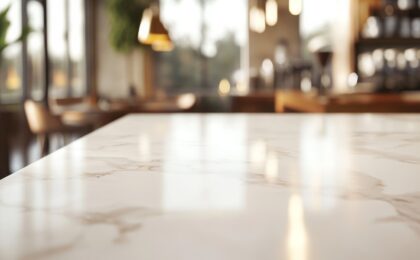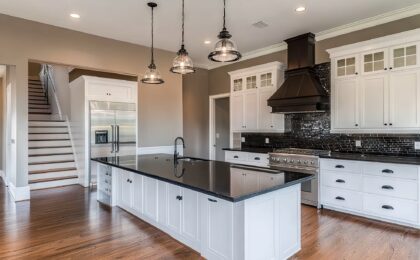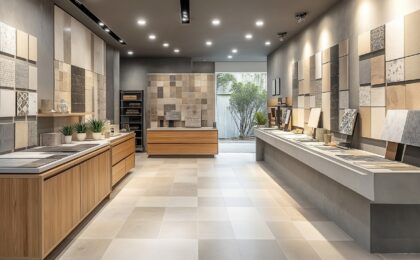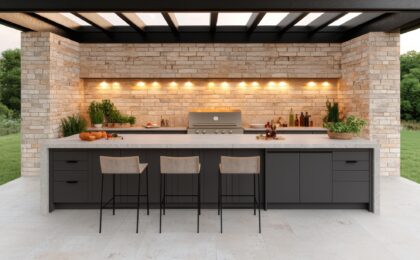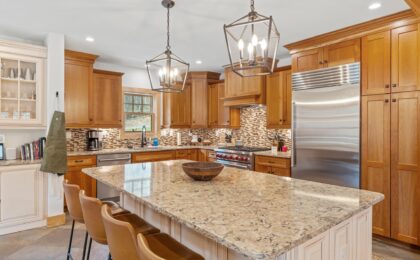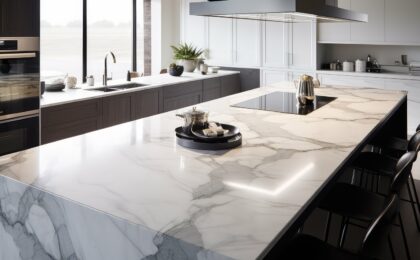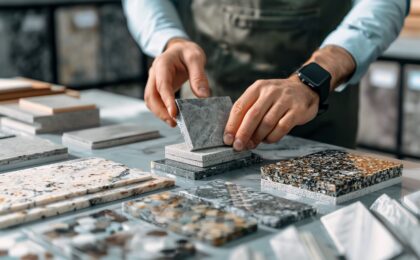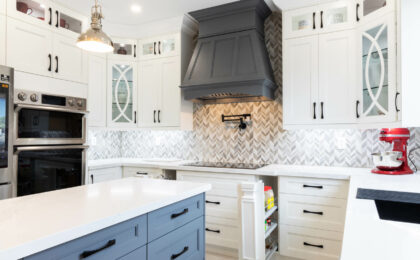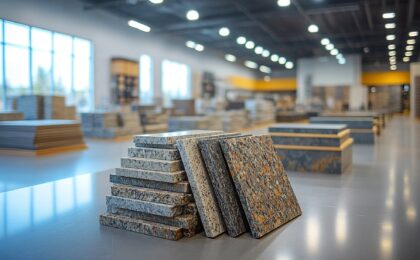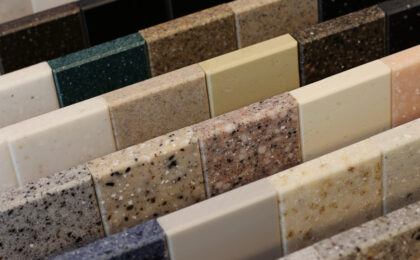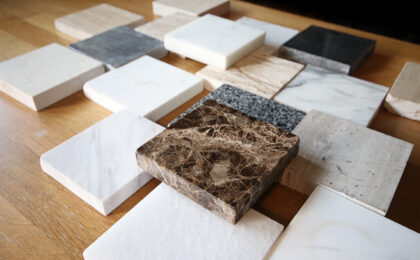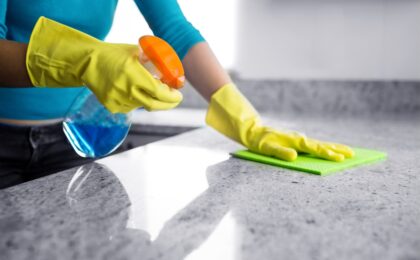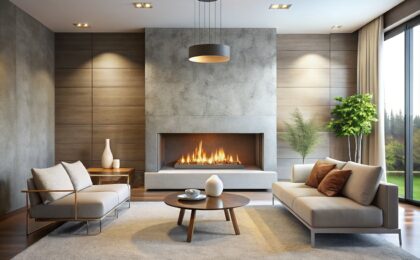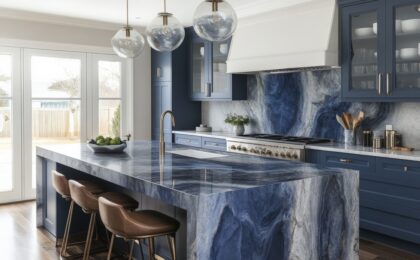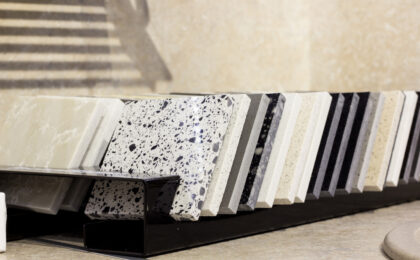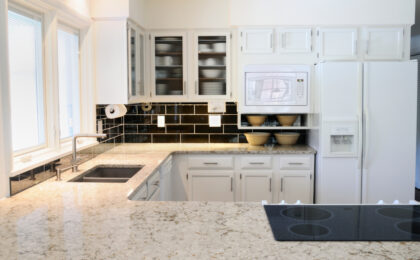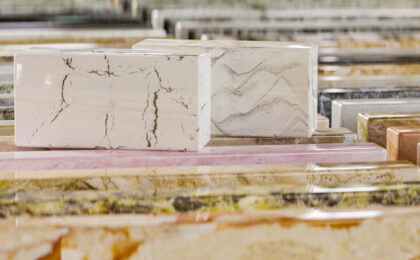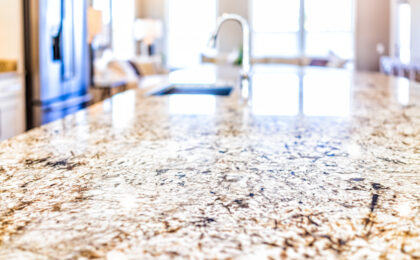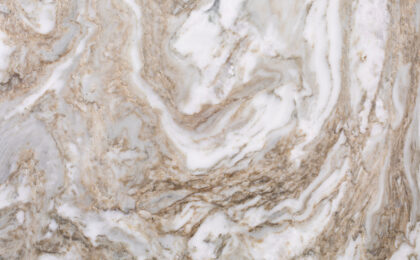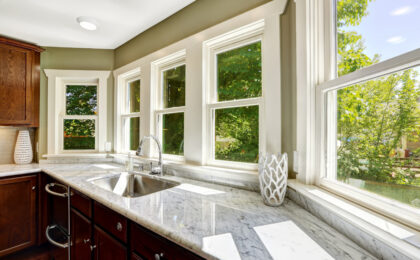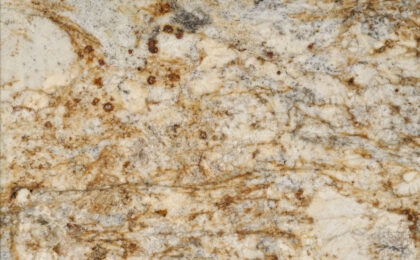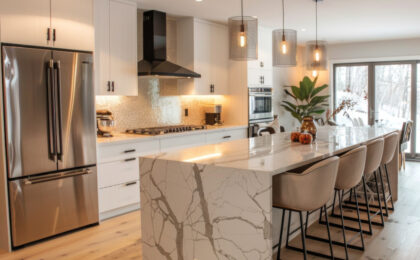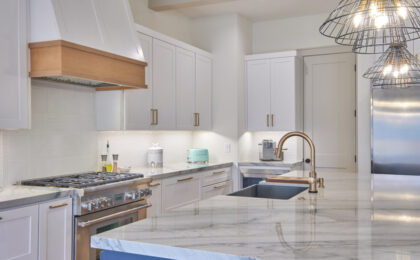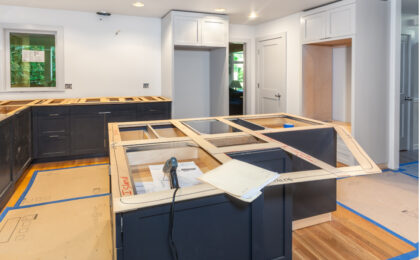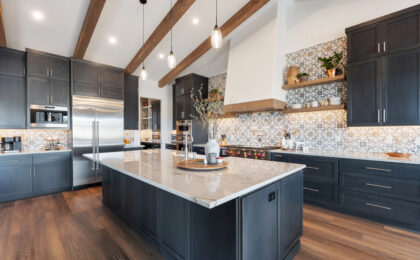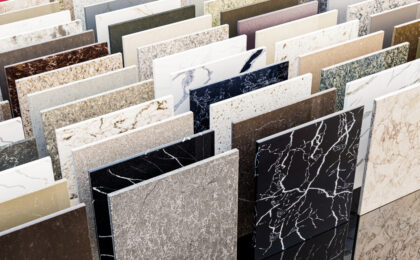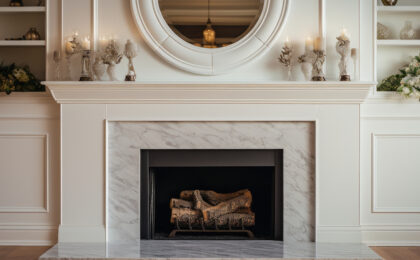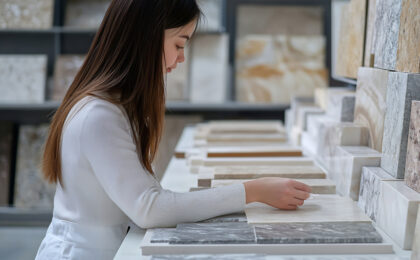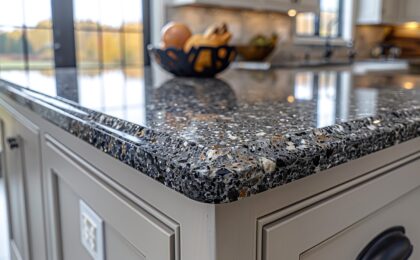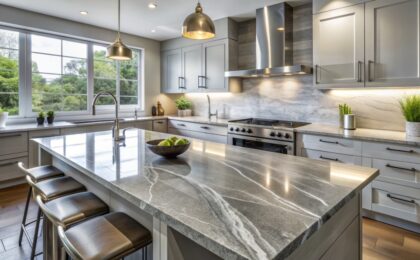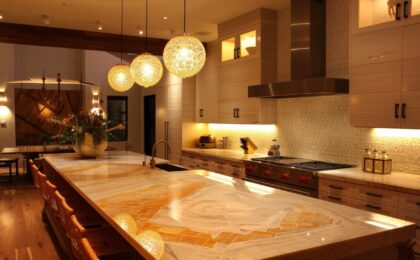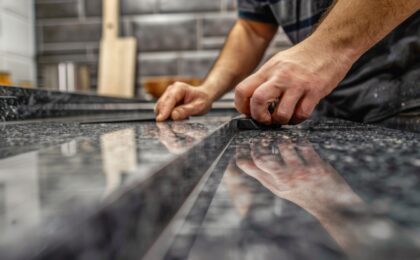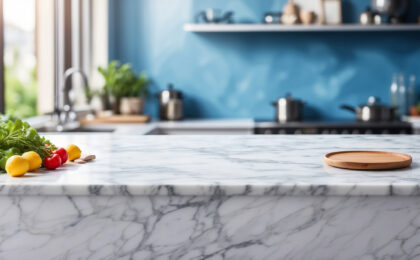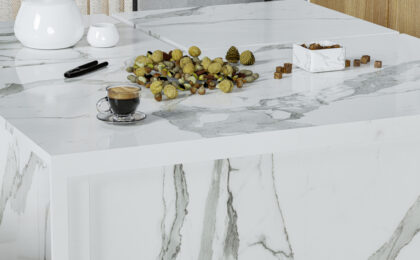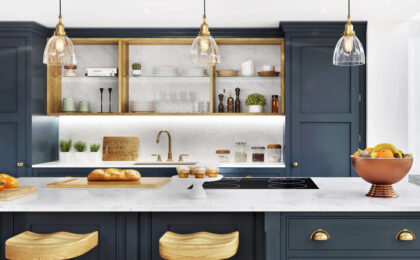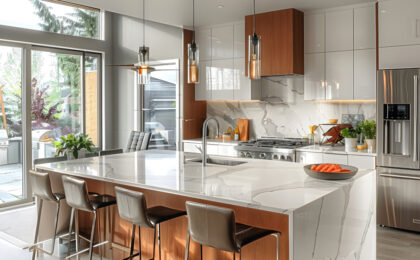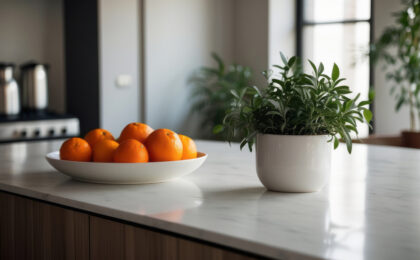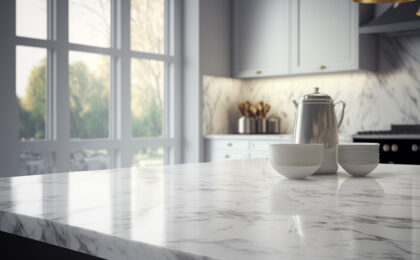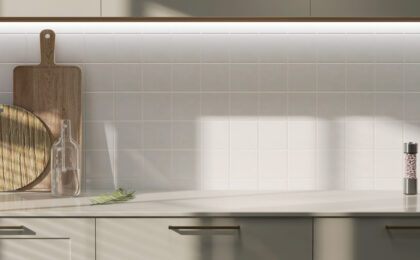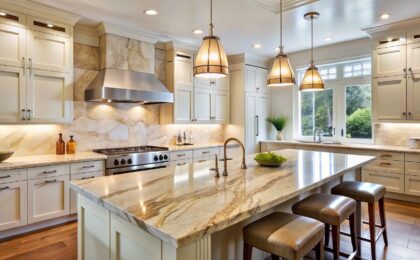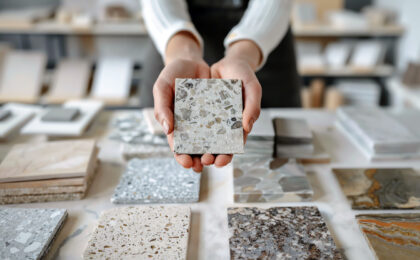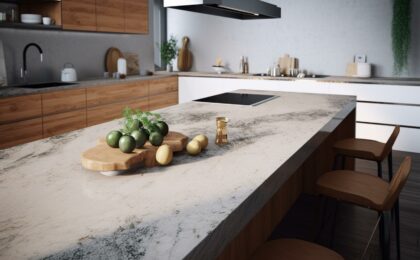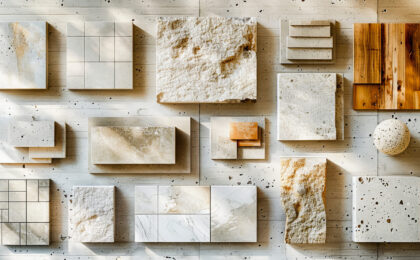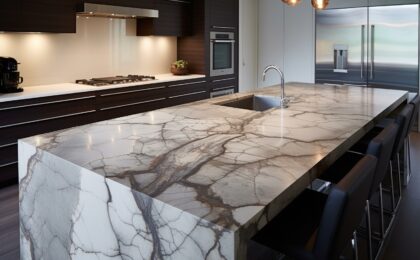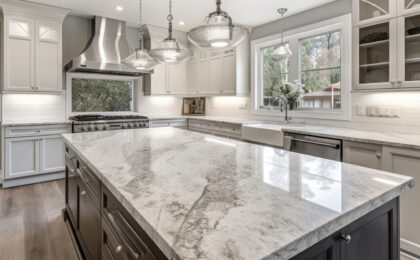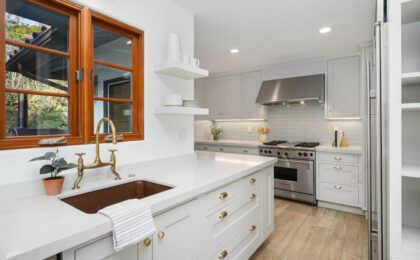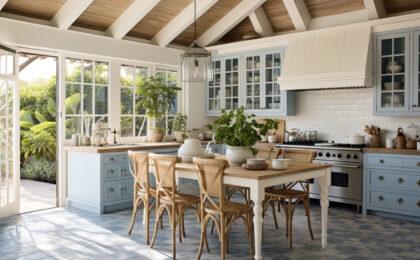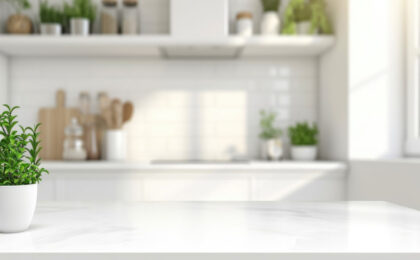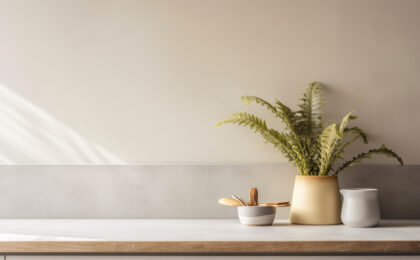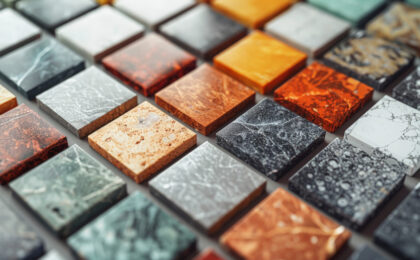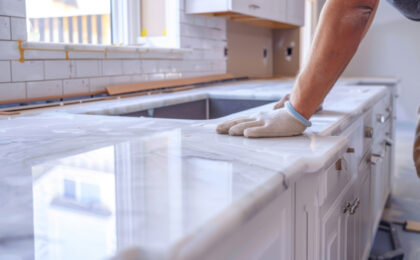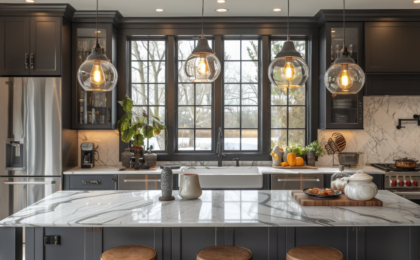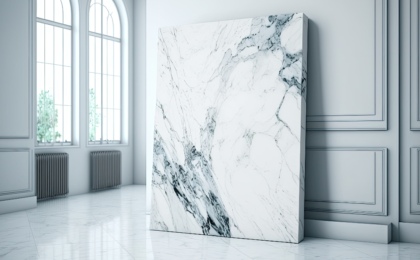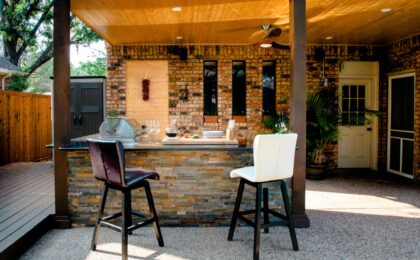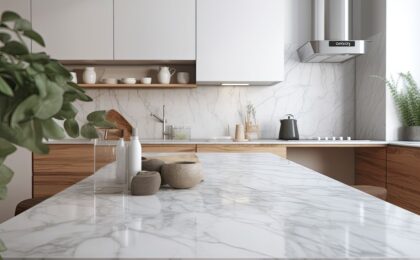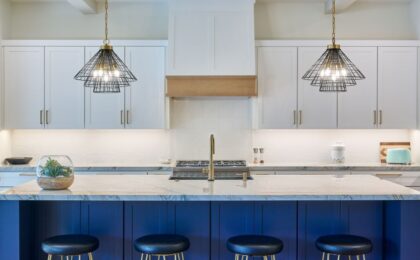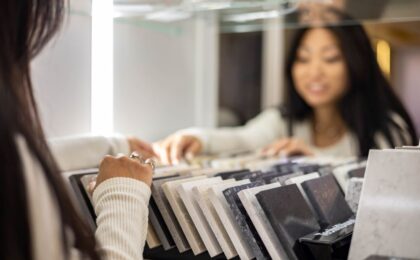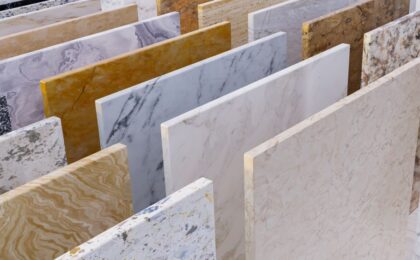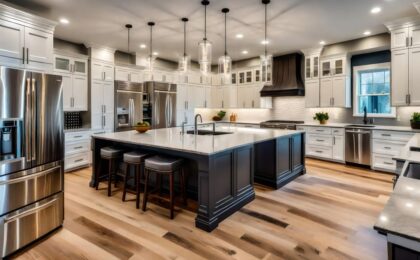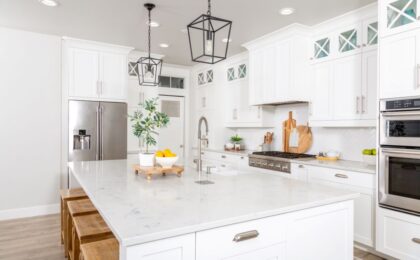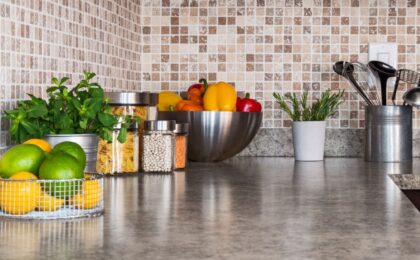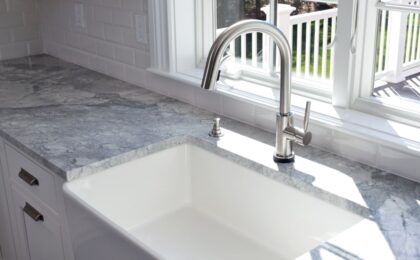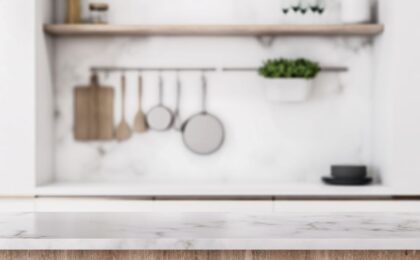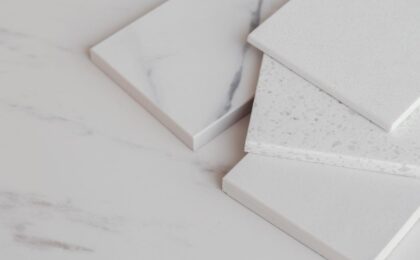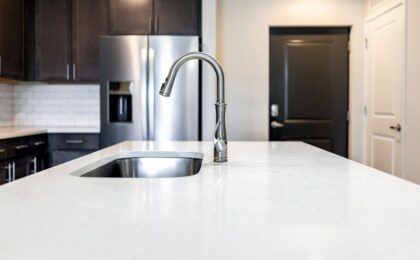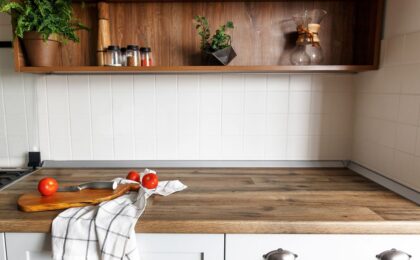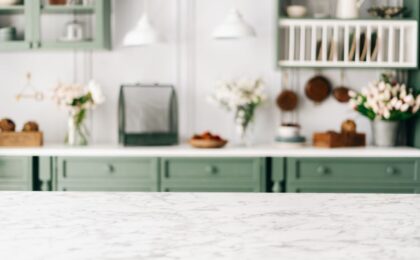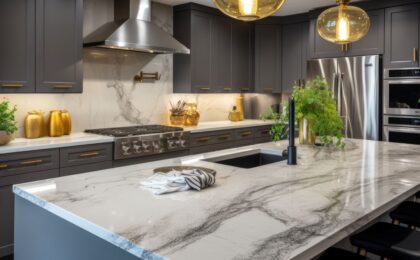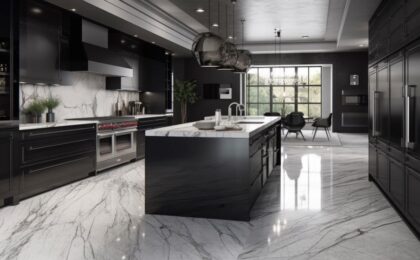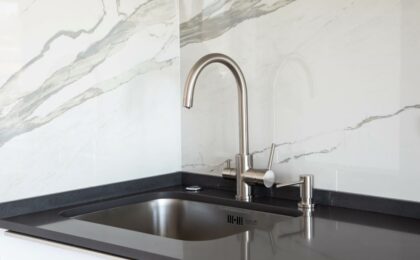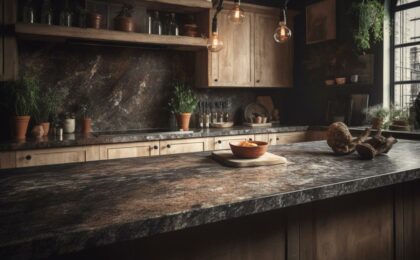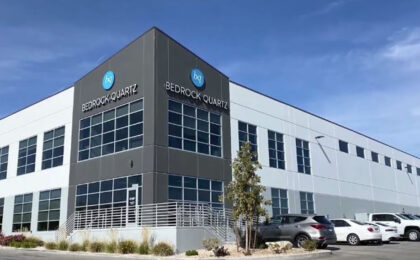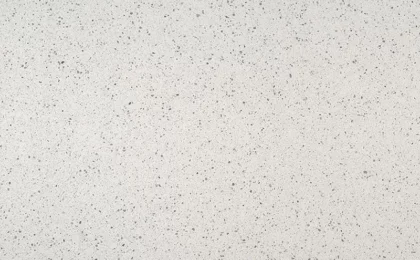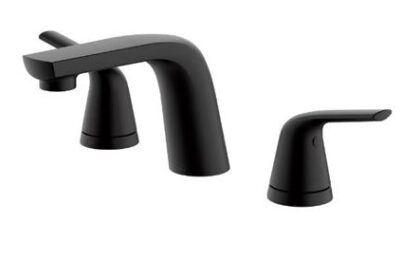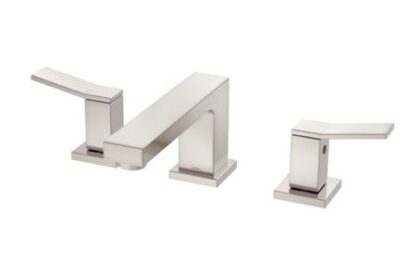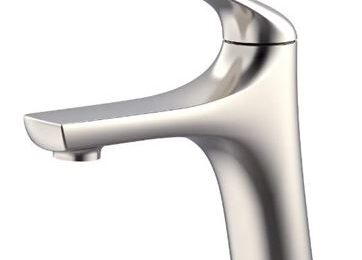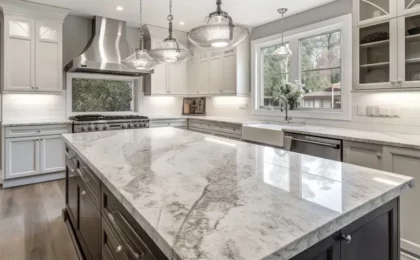Would you ever consider combining multiple stones in the same kitchen space? While the thought of doing so may seem bizarre, it is actually a trend. Designers and homeowners have begun exploring ways to combine multiple stone materials to create a truly unique look they can call their own.
Why would someone combine multiple stones? After all, every quarried stone is slightly different. Every natural stone countertop is unique. But let’s face it, to the untrained eye, one marble countertop looks pretty similar to the next. You could see marble countertops in the homes of all your friends and never create a mental distinction between any of them. Enter the idea of combining multiple stones.
Using multiple stones in the same space can make an enormous impact on first impressions. It can legitimately create a memorable space that friends and family members will not soon forget. But to pull it off, you really need to know what you are doing.
Veining Is the Most Important Aspect of Natural Stones
Veining is the most important aspect to pulling off a multi-stone design. Here’s the thing: you want to find slabs that don’t have competing veining patterns. Patterns should be similar in terms of complexity and direction. Otherwise, you will end up with a space that is very unpleasant to be in.
With that in mind, we recommend sticking with simple veining patterns. If veining is too complicated from a visual aspect, the eyes could easily be overwhelmed with too much to look at. Simple veining patterns are a lot easier to complement when you’re combining multiple stones like granite, marble, and quartzite.
How Color Choices Impact Presentation
Making multiple stone surfaces work is all about presentation. That being the case, you also need to pay attention to color. This is the trickiest part of the equation. Why? Colors with too much contrast will make the space look broken. On the other hand, colors that are too similar give the appearance that you made a mistake when the countertops were first installed.
The color contrast between multiple stones should be enough that guests understand your design was intentional. But it should not be so distinct as to give your guest the impression that you don’t know what looks good. Needless to say, there is a fine line when it comes to choosing colors.
Solid Colors on Separate Surfaces
There is a neat little trick you can employ if you want to maximize contrast without overwhelming the eyes: install a solid-colored quartz countertop on a separate surface. The easiest way to explain this is with an island.
You might choose granite and quartzite for your countertop and backsplash. Maybe you’ve chosen a blue-gray color scheme with subtle veining. A solid blue or gray quartz on the island could make the whole thing pop. The nice thing about quartz is that it is an engineered product. You could get virtually any color you wanted.
Don’t Ignore the Overall Aesthetic
One final note: do not ignore the overall aesthetic in your kitchen. The last thing you want to do is put the time and expense into finding just the right stones only to discover, after installation, that your new countertops clash with the floor, walls, and cabinets. Countertop surfaces are just one aspect of the kitchen aesthetic.It is possible to install multiple stones and still create a visually stunning kitchen space. We have seen people do it. If you are looking for something truly unique and are not afraid to mix marble, granite, and quartzite, consider how you might beautify your kitchen with a multi-stone installation. Come visit one of our Utah showrooms to look at stone countertop options in person.

